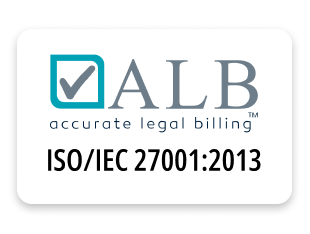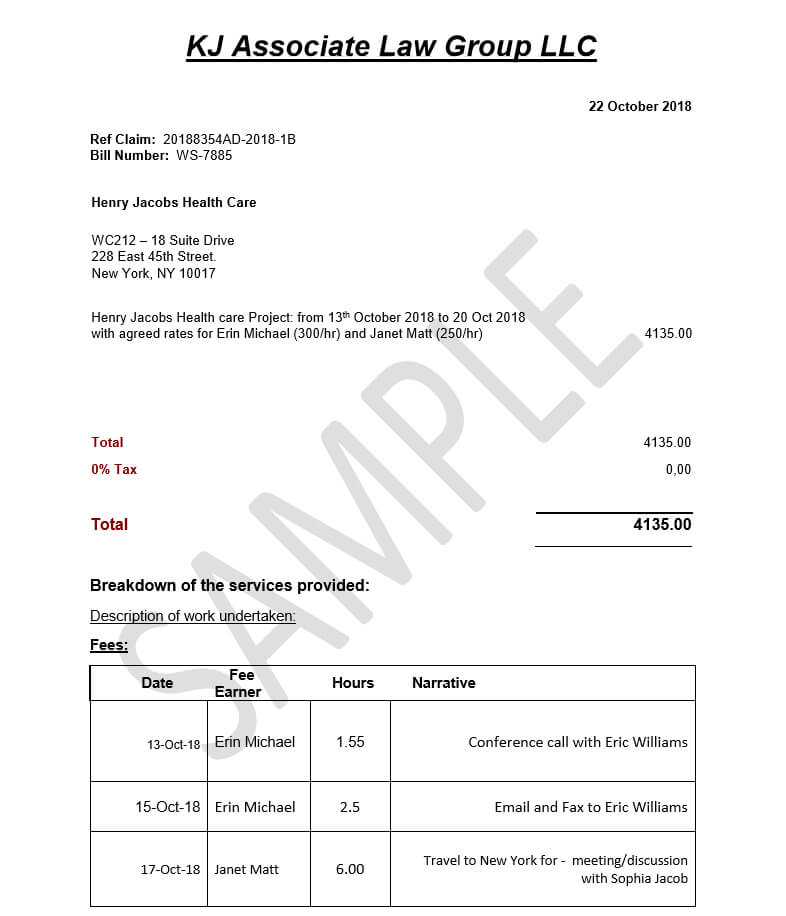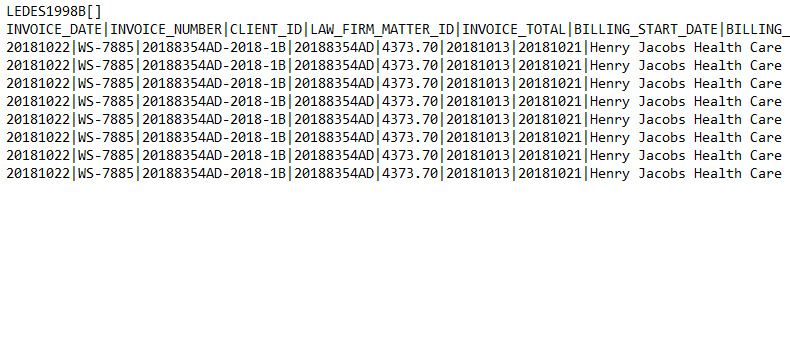
The Complete Guide to UTBMS Codes and LEDES Formats
If you’ve ever worked in a law firm or dealt with legal billing, you’ve probably heard terms like UTBMS and LEDES thrown around. Maybe you’ve even had a bill rejected because of them. But what exactly do they mean? And more importantly, why should you care?
Here, you will be walked through everything you need to know about UTBMS codes and LEDES formats in a simple way. Whether you're new to legal billing or just want a clearer understanding, you’re in the right place.
What Are UTBMS Codes?
UTBMS codes, or Uniform Task-Based Management System codes, are a standardized coding system developed to categorize and track legal work and related expenses. Created in the 1990s through a collaboration between the American Bar Association, the Association of Corporate Counsel, and major law firms, UTBMS codes address the need for a uniform approach to legal billing and analysis.
The codes are organized into several main categories:
• Phase Codes: Group legal work into broad stages, such as pre-trial, discovery, and trial for litigation matters.
• Task Codes: Break down legal work into specific tasks, like document review or motion drafting.
• Activity Codes: Identify the specific action performed, such as researching, drafting, or communicating.
• Expense Codes: Classify expenses like travel, court fees, or photocopying.
UTBMS codes are most commonly used in conjunction with electronic billing formats like LEDES, allowing law firms and clients to achieve standardized, transparent, and consistent billing practices. This system makes it easier to analyze legal spend, manage budgets, and reduce billing disputes by providing clear, comparable data on legal services and costs.
What Is the LEDES Format?
The LEDES format, which stands for Legal Electronic Data Exchange Standard, is a globally recognized, standardized file format specifically designed for electronic legal billing. Developed by the LEDES Oversight Committee (LOC) in 1995, its primary purpose is to enable law firms and corporate legal departments to exchange billing information in a consistent, structured, and easily processed way.
A LEDES file contains detailed invoice data, including billing dates, timekeeper information, line-item descriptions, units, costs, and standardized codes for tasks, activities, and expenses. By using LEDES, law firms can submit invoices electronically, ensuring clarity and reducing confusion for clients, while legal departments can efficiently review, analyze, and manage legal spend.
There are several versions of the LEDES format, such as LEDES 1998B and LEDES XML 2.0, 2.1, and 2.2, each offering varying levels of detail and support for complex billing arrangements. The adoption of LEDES has become the industry standard for legal e-billing, streamlining the payment and processing workflow between law firms and their clients.
LEDES File Formats and Variants
LEDES (Legal Electronic Data Exchange Standard) has evolved over time to accommodate the changing needs of legal billing, offering several file formats and variants. Here are the primary types in use:
Plain Text Formats
• LEDES 1998B
o Pipe-delimited plain text file with 24 fields.
o Most widely used in the United States for its simplicity and familiarity.
o Does not support taxes or alternative fee arrangements (AFAs).
o Invoice-level data is repeated on every line item.
• LEDES 1998BI
o International version of 1998B, ratified in 2006.
o Pipe-delimited plain text file with 52 fields.
o Supports a single tax per line item, making it suitable for use outside the United States.
XML-Based Formats
• LEDES XML 2000
o Introduced in 2000, now retired as of March 2022.
o XML format with 125 data fields within 7 segments.
o Allowed for client-specific field extensions.
• LEDES XML 2.0
o Introduced in 2006, supports 153–172 data fields and 15 segments.
o Supports multiple taxes per line item and AFAs.
o Enhanced international compatibility and data consistency.
• LEDES XML 2.1
o Introduced in 2008, contains 16 segments and up to 206 data fields.
o Improved support for tax, timekeeper, and regulatory issues.
o Enhanced handling of timekeeper rates and exchange rates.
• LEDES XML 2.2
o Introduced in 2020, contains 18 segments and 206 data fields.
o Only format supporting tiered tax requirements.
o Updated for better handling of timekeeper rates and international billing needs.
LEDES formats continue to evolve, with XML-based versions offering greater flexibility and support for complex billing scenarios, taxes, and international requirements.
How Law Firms Benefit from Using UTBMS Codes and LEDES Formats
UTBMS codes and LEDES formats provide significant benefits to law firms by making billing simpler, more accurate, and easier to manage financially. These standardized systems improve communication with clients, minimize billing mistakes, and offer detailed visibility into the nature and cost of legal services. Implementing them helps law firms speed up billing, strengthen client relationships, and access valuable data that supports smarter decision-making.
Here are the top 5 benefits of using UTBMS Codes and LEDES Formats:
1. A Common Billing Language for Everyone: With UTBMS, law firms and clients worldwide use the same language to describe legal work. This common understanding helps avoid confusion and vague billing descriptions. When everyone knows exactly what the codes mean, it builds trust and makes billing transparent.
2. Simplified Invoice Review and Fewer Disputes: Invoices that use UTBMS codes and LEDES formats are easier to review because every task and expense is clearly categorized and consistent. This transparency reduces billing disputes and speeds up invoice approvals, making the whole payment process smoother for both sides.
3. Better Record-Keeping and Financial Oversight: Using these standards helps firms and clients keep detailed, organized records of legal spending. Tracking costs by task, matter, or phase means legal departments have better control over budgets and can forecast more accurately.
4. Powerful Legal Spend Analysis: When billing data is standardized, clients can analyze how their legal budget is used, spot patterns, and identify areas for savings. This kind of insight is critical for in-house legal teams who manage multiple law firms and matters.
5. Enables Data-Driven Legal Strategy (“Moneyball” for Law): Finally, by linking billing data to case outcomes, firms and clients can make smarter decisions, focusing on what delivers results and cutting back on what doesn’t. Just like in sports analytics, this data-driven approach helps make legal work more strategic and cost-effective.
How to Implement UTBMS and LEDES in Your Law Firm
If you’re ready to bring UTBMS and LEDES into your firm, here are a few things to keep in mind. First, check that your billing and practice management software supports these standards. Most modern systems do, but it’s worth confirming. If you don’t have the right software, consider upgrading or adding a module that can handle UTBMS codes and LEDES files.
Next, train your staff thoroughly. Everyone who logs time or prepares invoices should know how to use UTBMS codes properly and consistently. Clear instructions, examples, and regular refreshers will go a long way in preventing mistakes.
Finally, set up a review step before sending out invoices. Make sure entries are coded correctly and invoices conform to the client’s required LEDES format. This extra check saves time and avoids payment delays.
Following these steps will make your billing process smoother, reduce errors, and help you meet client expectations, all of which strengthen your relationships and reputation.
📥 Download UTBMS & LEDES Checklist
Conclusion
While implementing these standards might seem challenging at first, this guide aims to make UTBMS codes and LEDES formats easier to understand and apply. If working in legal billing or just looking to understand the process better, don’t hesitate to schedule a call with experts who can provide practical tips and resources to get your firm started. When everyone speaks the same billing language, life becomes easier for both law firms and clients alike.

.png)



